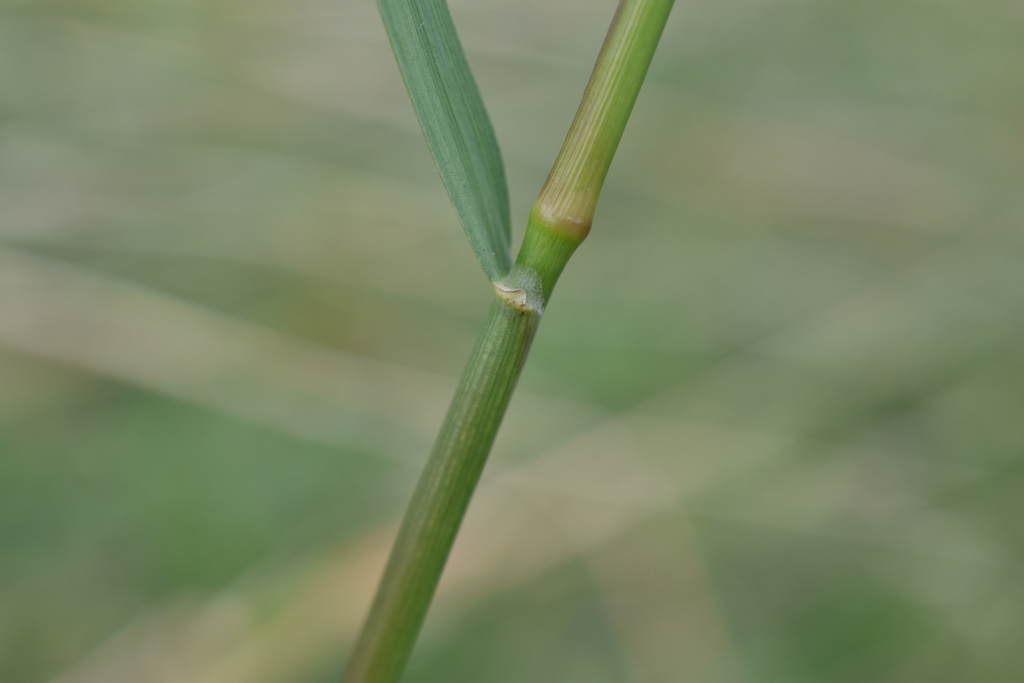Oloptum
M.Roser & H.R.HamashaPlants perennial, loosely caespitose, not rhizomatous. Culms somewhat cane-like, erect or geniculate ascending, glabrous, often branching at lower cauline nodes. Leaf sheaths glabrous, persistent, smooth; ligules membranous; leaf blade flat, glabrous, smooth except for finely scabrous margins and nerves on upper surface. Inflorescence an open pyramidal panicle, lower branches whorled, these often with sterile spikelets. Spikelets elliptic, dorsally compressed with one fertile floret without rachilla extension; disarticulation above the glumes; glumes subequal, longer than the florets, 3-veined, without transverse veinlets, membranous, apices acuminate; florets chartaceous; calluses with non-grooved circular disarticulation scar, glabrous; lemma cylindric to obovoid, central vein not grooved, apex awned; awn straight or weakly bent around the centre, early-deciduous but often remaining held within the inrolled tips of glumes; palea about as long as the lemma, firm, 2-veined.
Monotypic genus native to Europe, mainly the Mediterranean region, also northern Africa, Sinai to Western Asia.
The unique morphological character states (among stipoid grasses) of Oloptum are the glabrous lemma with a central vein not grooved, 3-veined glumes without transverse veinlets, and a callus with a circular disarticulation scar. The lemma epidermal pattern of Oloptum is unusual among achnatheroid grasses similar only to that of Celtica (Peterson et al 2019). Molecular studies have shown that O. miliaceum is sister to the Eurasian Achnatherum clade in the core Achnatherum clade, which also includes Anemanthele, Austrostipa, Celtica and Stipellula (Romaschenko et al. 2011, 2012).
 Spinning
Spinning